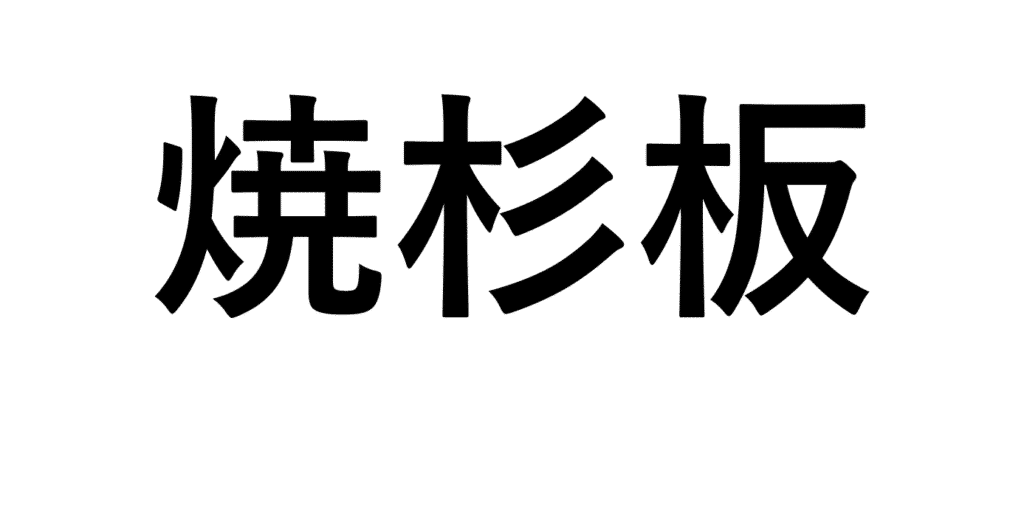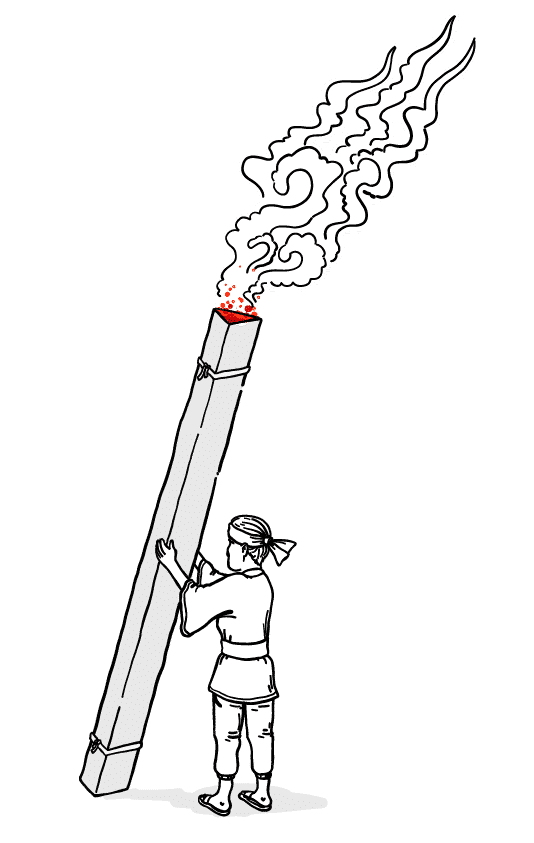Demystifying the Art of Wood Charring:
Yakisugi vs. Shou Sugi Ban
Demystifying the Art of Wood Charring:
Yakisugi vs. Shou Sugi Ban
Demystifying the Art of Wood Charring:
Yakisugi vs. Shou Sugi Ban
The art of enhancing wood’s natural beauty and durability through traditional Japanese charring techniques has garnered global recognition. Two terms, “Yakisugi” and “Shou Sugi Ban,” have gained popularity in the world of woodworking and architecture. However, it is essential to note that while “Shou Sugi Ban” is predominantly used in English-speaking regions, the correct and original Japanese term is “Yakisugi.” In this article, we will delve into the correct readings of these terms and shed light on nowadays differences between Yakisugi and Shou Sugi Ban.
Understanding the Correct Readings
To grasp the distinctions between Yakisugi and Shou Sugi Ban, it is crucial to understand their correct readings in Japanese. Both terms are based on the same Kanji characters: 焼杉板. The accurate Japanese reading for these three characters is “Yaki Sugi Ita,” which translates to “burned cypress plank” in English.
Japanese characters have their roots in Chinese, adopted over 1,200 years ago. As a result, most Japanese characters have dual readings (or even more), representing the Japanese word reading and the original Chinese reading. In the case of Yakisugi and Shou Sugi Ban, 焼 has the Japanese reading “Yaki” (or “Yaku” in its infinitive form) and the Chinese reading “Shou.” The combination of 焼杉 is correctly read as “Yakisugi,” and any other reading, including “Shou Sugi,” would not be comprehensible to a Japanese person. The last character 板 is read as “Ita” or “Ban” and simply means plank or board. In combination with other characters like 焼杉板, it should be read as “Ita” and not “Ban.”
It remains unclear how the misreading of the correct characters as “Shou Sugi Ban” came about. Some believe it may have originated from a foreign scholar associated with Terunobu Fujimori, a renowned architect who revived the Yakisugi tradition in Japan in the mid-2000s, others believe it was first used by US American university scholars. Regardless of its origins, it is important to acknowledge that the authentic term is “Yakisugi,” which has its roots in Japanese tradition.


What makes Yakisugi authentic according the ancient Japanese tradition? And what is the difference to Shou Sugi Ban?
Yakisugi is not merely a surface treatment for wood; it involves a heat treatment of the entire board to increase its durability throughout. This technique has been primarily used for exterior cladding purposes. Furthermore, only Japanese cypress (Sugi) is used for Yakisugi, as it is the only wood species that produces both beautiful and durable products with a stable and long-lasting soot layer. As “Sugi” Japanese cypress is a part of both terms “Yakisugi” and “Shou Sugi Ban,” it is an integral element of this technology.
In reality, “Shou Sugi Ban” is a term based on a mistranslation and is considered a bogus term in the context of the Japanese tradition. Although it has become popular in the English-speaking world, it is not recognized or understood in Japan due to its inaccurate representation.
While Yakisugi adheres to authentic Japanese tradition, “Shou Sugi Ban” has evolved into a term encompassing various charring techniques, often utilized in DIY culture. Many hobby craftsmen experiment with blow torches to create artistic pieces that extend beyond traditional cladding, including furniture, fences, picture frames, and artworks. While quite some of these creations have artistic merit, they deviate from the core principles of the original Japanese tradition. But in some cases, it is actually dishonest to claim that work is based on Japanese tradition when it rather seems that the good sound of Japanese tradition is deliberately exploited here, but that the core of the tradition is not bothered about.

For these reasons, authentic Yakisugi
- never uses other wood species but Sugi (Japanese cypress) because most other species are much less suitable for high-quality and longlasting charred surfaces
- never uses blowtorches or other means of low-grade burning instruments because the charring will not succeed deep enough, nor will a harmonious even surface emerge.
- never use thick layer stains or wood paint or strong pigment colours but only semi-transparent stains which provides protection against weathering but also leaves the beautiful grain visible
- Is a means to extend the lifetime of thin cladding and siding boards – planks should not be thicker than 15 mm, thick timber blocks, beams, squared timber, etc cannot be treated in the Yakisugi tradition through and through due to their thickness being to large.
- Is avaiable in three finishes: Suyaki, Gendai and Pika-Pika.
Whether you choose to honor the time-honored tradition of Yakisugi or explore the artistic possibilities of “Shou Sugi Ban,” both techniques offer unique opportunities to showcase the beauty and resilience of wood through the ancient art of charring.
Please contact us, if you have any more questions.

 EU (English)
EU (English) DE (Deutsch)
DE (Deutsch) FR (Français)
FR (Français) UK (English)
UK (English) US Website
US Website


